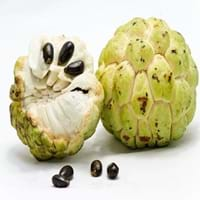Health Benefits
Cancer prevention, Heart care, Regulation of heart rate
Anti-aging benefits, Anti-inflammatory properties, Asthma treatment, Body hydration, Cancer prevention, Digestive aid, Skin cleansing, Skin rejuvenation
General Benefits
Anti oxidant properties, Anti-inflammatory properties, Boosts immune system, Controls blood pressure, Digestive aid, Strengthens bones
Anti-inflammatory properties, Body hydration, Controls blood pressure, Digestive aid, Maintains healthy cholesterol level
Skin Benefits
Reduces wrinkles, Skin rejuvenation
Anti-aging benefits, Brightens and lightens complexion, Hydrates skin
Hair Benefits
Promotes longer and healthier hair, Treatment of dandruff, Treatment of Lice
Promotes longer and healthier hair, Regulates hair growth
Allergy Symptoms
Anaphylaxis, Itching, Skin rash, Swelling of face
Breathing difficulty, Decrease in blood pressure, Dizziness, Eczema, Hives, Runny nose, Swelling of mouth, tongue or lips, Watery eyes
Side Effects
Allergic reaction, Possibly unsafe during pregnancy
Allergic reaction, Bloating, Diarrhoea, Indigestion, Intestinal gas, Nausea, Vomiting
Best Time to Eat
As a snack in the late afternoon, Don't consume at night and before bed, Morning time (before lunch)
As a snack in the late afternoon, Don't consume at night and before bed, Eat the fresh ones, avoid mixing with any other foods, don't eat after meal., Strictly avoid empty stomach
Vitamin A (Retinol)
Not Available
Vitamin B5 (Pantothenic Acid)
Vitamin C (Ascorbic Acid)
Vitamin K (Phyllochinone)
Not Available
Phytosterol
Not Available
Calories in Fresh Fruit with Peel
Not Available
Not Available
Calories in Fresh Fruit without Peel
Calories in Frozen Form
Not Available
Not Available
Calories in Dried Form
Not Available
Calories in Canned Form
Not Available
Not Available
Calories in Juice
Not Available
Calories in Jam
Not Available
Calories in Pie
Not Available
Type
Tropical
Berry, Melon
Season
Autumn, Spring, Winter
Summer
Varieties
Andrews, Amarilla, Asca, Baste, Bays, Bayott, Behl, Canaria, Capucha, Deliciosa, Ecuador, El Bumpo, Guayacuyán, Jete, Juniana, Knight, Nata, Popocay, Sander, Smoothey, Tumba, Umbonada, Whaley and White Juliana
Sugar Baby, Sangria, Golden Midget, Starlight, Jubilee, Starbrite, Extazy, Stars 'n' Stripes, Mickylee, Yellow Baby, Yellow Doll, Little Baby Flower, Sweet Favorite and Cream of Saskatchewan
Color
Green, Yellow
Canary yellow, Coral red, Orange, Salmon yellow, Scarlet red, White
Origin
Ecuador
Southern Africa
Soil Type
Sandy loam
Sandy, Well-drained
Climatic Conditions
Warm
Dry, Hot
Facts about
- Cherimoya is also called as custard apple or chirimoya.
- The word cherimoya came from the Quechua word,'chirimuya',which means 'cold seeds'.
- The cherimoya is called as 'the tree of ice cream'.
- Watermelon contain 91% of water.
- In Japan & Chine, watermelon is a popular gift to bring a host.
- Entire watermelon is edible, even the rinds & seeds.
- There are more than 1200 varieties grown in the world.
Other Countries
Argentina, Chile, Colombia, Egypt, Italy, Mexico, Peru, South Africa, United States of America
Algeria, Brazil, Egypt, Iran, Kazakhstan, Mexico, Spain, Turkey, United States of America
Top Importer
United States of America
Germany
Botanical Name
Annona cherimola
Citrullus Lanatus
Synonym
Not Available
Citrullus vulgaris
Subkingdom
Tracheobionta
Tracheobionta
Division
Magnoliophyta
Magnoliophyta
Class
Magnoliopsida
Magnoliopsida
Subclass
Magnollidae
Dillenhidae
Order
Magnoliales
Cucurbitales
Family
Annonaceae
Cucurbitaceae
Species
A. cherimola
C. lanatus
Generic Group
Not Available
Gourd
Difference Between Cherimoya and Watermelon
We might think that Cherimoya and Watermelon are similar with respect to nutritional value and health benefits. But the nutrient content of both fruits is different. Cherimoya and Watermelon Facts such as their taste, shape, color, and size are also distinct. The difference between Cherimoya and Watermelon is explained here.
The amount of calories in 100 gm of fresh Cherimoya and Watermelon with peel is Not Available and Not Available and the amount of calories without peel is 75.00 kcal and 30.00 kcal respectively. Thus, Cherimoya and Watermelon belong to and category.These fruits might or might not differ with respect to their scientific classification. The order of Cherimoya and Watermelon is Magnoliales and Cucurbitales respectively. Cherimoya belongs to Annonaceae family and Watermelon belongs to Cucurbitaceae family. Cherimoya belongs to Annona genus of A. cherimola species and Watermelon belongs to Citrullus genus of C. lanatus species. Beings plants, both fruits belong to Plantae Kingdom.









